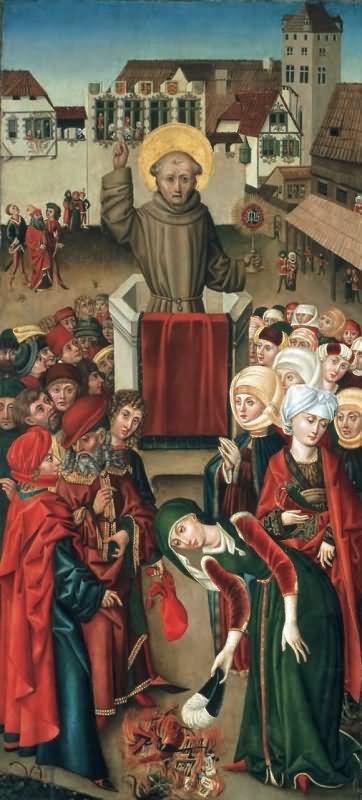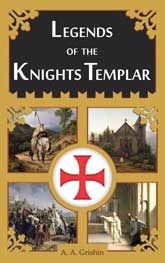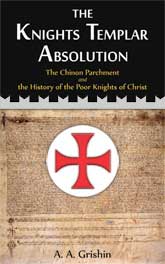 Michael Rank is a historian, blogger, and podcaster. He blogs at michaelrank.net, podcasts via the History in Five Minutes Podcast and has written such books as “History’s Most Insane Rulers: Lunatics, Eccentrics, and Megalomaniacs From Emperor Caligula to Kim Jong Il.”
Michael Rank is a historian, blogger, and podcaster. He blogs at michaelrank.net, podcasts via the History in Five Minutes Podcast and has written such books as “History’s Most Insane Rulers: Lunatics, Eccentrics, and Megalomaniacs From Emperor Caligula to Kim Jong Il.”
Historians like firm beginning-and-end points. It is an effective strategy to streamline the messy business of writing history. The Crusades are treated no differently and typically bookended between Pope Urban II’s call to reclaim the Holy Land in 1095 and the fall of Acre and the Latin Kingdom of Jerusalem in 1291. The historiographical line goes that the Crusades were a phenomena of the Middle Ages and connected to feudalism and scholasticism, something that was an anachronism by the time of the Renaissance with the humanist revolution and growth of large empires.
But the famed preacher, theologian and inquisitor John of Capistrano proved that crusading was still an attractive idea in the flowering of the Renaissance. At this time printing presses produced the indulgences that would be sold to finance a crusade that never materialized decades before Martin Luther published anti-Catholic material. Contemporary priests and scholars used humanistic logic to argue for the crusades, saying that the Turks were a Scythian barbarian race that destroyed classical civilization. But Capistrano overshadowed all other preachers and clergy in this period. He was full of energy and ran a frenetic preaching campaign across Europe in the mid 1400s. At this time the 70-year-old man said he had an itinerary “that would have exhausted the very stones.”
The Franciscan friar lived during the growing threat of the Ottoman Turks and their conquest of European strongholds in Kosovo and Varna. But when the Turks conquered Constantinople, the still-beating heart of antiquity, Pope Calixtus commissioned him to rally the frontier states of Europe for fear of further Turkish conquest that could soon envelop the whole continent. He did that and more by personally leading a peasant army that repelled the Turks at Belgrade. For this act he was canonized in 1690.
Giovanni da Capestrano was born in 1386. He entered the Franciscan order in 1416 and wholly embraced asceticism. Although of Italian background, he was often commissioned by the papal curia to preach in northern Europe in Germany, Austria, Poland, and Hungary. He spoke to crowds through a translator who converted his Latin into the vernacular but could still gather the masses. At Brescia he preached to a crowd of 126,000. Capistrano preached agains heresies of the time, and the most common target of these sermons were the European Jewish population, as they were the largest religious minority at hand and an easy target for confessional violence. In Breslau 41 Jews were burned; in Berlin, 36. But the most important event of his career came in 1454 when Pope Calixtus sent him to preach a crusade against the Ottomans at the Diet of Frankfurt.
In the 1400s European political and religious leadership agreed that successfully fighting the Turks depended on two factors: recruitment and finance. While in the Middle Ages a war could be waged on rulers compelling their subjects to sustain hostilities through taxation, in the 15th century it depended on the capacity of standing armies. Preachers were therefore necessary to go out and recruit soldiers. In this case, Capistrano was a sensation. It is likely hundreds of crusegnati took up the cross in response to his preaching to defend Europe after the fall of Constantinople.
Hungary was threatened by a Turkish invasion, whose commanders aimed to capture Belgrade as means of entering the Hungarian Kingdom. Capistrano preached a crusade in Hungary’s western counties and was able to raise up a crusegnati army by 1456. However, Hungarian King Janos Hunyadi thought that the was wholly unfit and made up of a ragtag group of zealous peasants, similar to the crowd that accompanied Peter the Hermit in the First Crusade. He was right: Many of the crusaders were peasants and yeoman that only had farming implements for weapons such as slings and scythes. They, combined with a few mercenaries, only totaled 50,000 fighting men. Opposite them were 70,000 veteran Ottoman soldiers.
As a result, many Hungarian nobles did not answer the call for a crusade to defend Belgrade. There was soon a breakdown in hierarchical obligation, starting from the top and splintering up the army. Nevertheless, Capistrano prepared for the defense of Belgrade’s fortress and would even come to lead his own contingent into battle despite his advanced age.
Ironically, it was the behavior of his ragtag collection of troops that led to victory in 1456. Some of the peasant soldier units ignored Hunyadi’s orders to stay their position in the fortress, ventured outside the ramparts and started harassing Ottoman soldiers. More soldiers joined them outside the wall, and despite Capistrano’s attempts to order them back inside, he realized that an inadvertent battle was taking place. So he led them to enemy lines and shouted “The Lord who made the beginning will take care of the finish!” His led his crusaders out to the Ottomans while Hunyadi charged out of the fort at the Turkish cannon positions.
The surprise attack caught the Ottomans completely off guard. They attempted to recapture their camp and stop the , but soon their effort fell apart. Sultan Mehmet II took an arrow and was rendered unconscious. The Ottomans soon fled. Capistrano’s contingent of peasants had no artillery or horses, so when the Ottomans were surprisingly repelled from the fortress, they could not pursue the Turks once they were routed.
Capistrano would have continued preaching a crusade against the Turks, who were monetarily on the defense. However, the elderly Franciscan fell ill from bubonic plague three months after the battle. He died on October 23, 1456. As a legacy of his bravery in battle, he earned the moniker “the soldier saint” and is know as the patron saint of military jurists today. He is also widely considered to be one of the last major figures in the European Crusades. By the 16th century, large empires replaced the papacy as the central mechanism in fighting off Islamic advancement into Europe.
As a result, figures such as Capistrano would not appear again.
Michael Rank


0 comments… add one